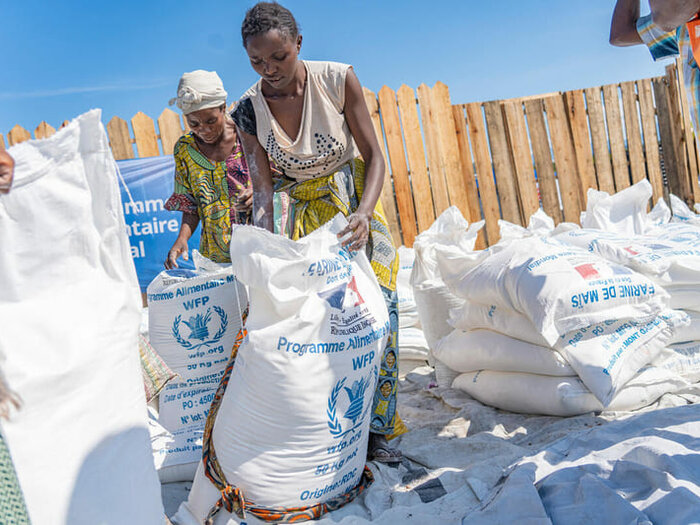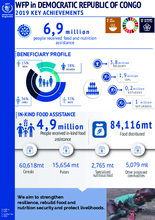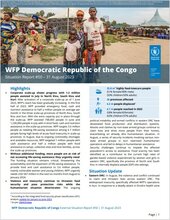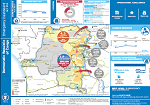Emergency
Democratic Republic of the Congo emergency
- 6.7 million
- people are food insecure and need life-saving food assistance in Ituri, North Kivu and South Kivu
- More than 900,000
- children under five require treatment for severe wasting
- US$567 million
- WFP's net funding requirement from August 2023 to January 2024
The Democratic Republic of the Congo (DRC) is facing one of the world's largest hunger crises. According to the latest Integrated Food Security Phase Classification (IPC), an estimated 25.8 million people are experiencing crisis and emergency levels of food insecurity, including 6.7 million people in the three eastern provinces of Ituri, North Kivu and South Kivu.
The number of internally displaced persons (IDPs) has reached approximately 6.3 million, with a significant concentration in Ituri, North Kivu and South Kivu provinces. In these three provinces, 5.6 million people have been forced to abandon their homes – 2.8 million people since March 2022 and 1 million since January 2023.
WFP is scaling up its operations in the three provinces to address the pressing needs, aiming to assist 3.6 million food-insecure people, including IDPs, host families and vulnerable host communities. Despite these ongoing efforts, WFP continues to face significant funding shortages. The total cost of the WFP response in DRC amounts to US$728 million, yet there remains a funding gap of US$567 million. This shortfall poses a threat to the continuity and effectiveness of humanitarian operations in the country.
What the World Food Programme is doing to respond to the DRC emergency
-
Eastern DRC Crisis
-
The latest Integrated Food Security Phase Classification estimates that 6.7 million people in Ituri, North Kivu and South Kivu are currently experiencing crisis and emergency levels of food insecurity, accounting for 44 percent of the population. This represents a 10 percent increase in food insecurity since July 2022, indicating a worsening situation. In response, WFP plans to provide food, cash and nutrition assistance to 3.6 million people in need, including iIDPs, host families and vulnerable host communities.
-
Emergency response
-
In 2022, WFP reached 6.2 million people with life-saving support, including food, cash and nutrition assistance. This assistance targeted vulnerable individuals, with a particular emphasis on reaching women, who comprised 58 percent of recipients. During this period, WFP moved 97,000 metric tons of food and distributed US$63.5 million in cash and commodity vouchers to those in need.




